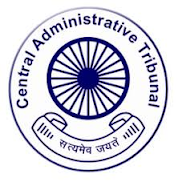Administrative Tribunals
Administrative Tribunals have been known to provide effective and timely justice. The judicial functions have been delegated to tribunals under different acts and statutes in India such as Article 323-A and 323-B (Part XIV-A) of the Indian Constitution as well as the Administrative Tribunal Act, 1985.It is due to this ability that the benches of Administrative Tribunals have increased from 5 to 17 over some time. The growing importance of the same for providing justice has resulted in questioning the constitutionality of these quasi-judicial bodies. The landmark cases of S.P. Sampath Kumar v. Union of India[i] and L. Chandra Kumar v. Union of India[ii] have been focused upon while explaining the extent of the constitutionality of such tribunals.
Administrative Tribunals and Their Benefits
Administrative Tribunals have a lot of advantages as compared to the traditional court system in India. They are comparatively flexible, cheaper, and resource-saving. The procedure established is also much easier than the one followed in courts. Hence, the administrative tribunal provides an effective law mechanism by ensuring speedy justice and reducing the pendency of cases. Furthermore, the process is less time consuming than that of courts and therefore helps in saving valuable resources. The advantages have not gone unnoticed, and thus the numbers of benches have increased, proving the need for more administrative tribunals.
Judicial Regime of Constitutionality of Administrative Tribunals
In the landmark case of L.Chandra Kumar v. Union of India[viii], the court was of the view that Article 323A 2(d) was unconstitutional to the point where in the jurisdiction of the HCs as well as the SC was excluded. The court also held that the tribunals were not at an equal pedestal as the HCs, the matter before the tribunals can be appealed before a bench of two or more judges of the HC. This was thus contrary to the Sampath Kumar judgment which put the two of them on the same pedestal. Further, the SC also said that these tribunals under 323-A and 323-B have the power to “examine the constitutionality of an enactment or rule concerning matters on Articles 14, 15 and 16 of the constitution”[ix].
It is to be noted that the decision in Sampath Kumar did not overrule the decision in L. Chandra Kumar, just another facet of the same was discussed and elaborated by the apex court. The purpose for which the administrative tribunals were set up was also upheld by the Supreme Court in both cases.
Constitutionality of the Administrative Tribunals
- The tribunals and High Courts are not to be placed on the same pedestal, i.e. the tribunals are not substitutes of the high court. A matter presented before the administrative tribunal is appealable before a two-judge bench of the jurisdictional High Court.
- The tribunals are unconstitutional to the point where they eliminate the jurisdiction of the Supreme Court and High Court under Article 32 and 226 of the Indian Constitution.
- The tribunals have the authority to examine the validity of various statutes except the one through which they have been established i.e. the Administrative Tribunals Act, 1985.
- The tribunals have the initial jurisdiction for the matters which they have been established. The litigant doesn’t have the right to move to a High Court directly when there is a tribunal which deals with that area of law. This has been done to reduce the number of pending cases before the High court and to ensure timely justice.



Nyc one akansha
Chk mine https://www.ijalr.in/2020/08/devadasi-system-in-india.html?m=1